.jpg)
What are cataracts?
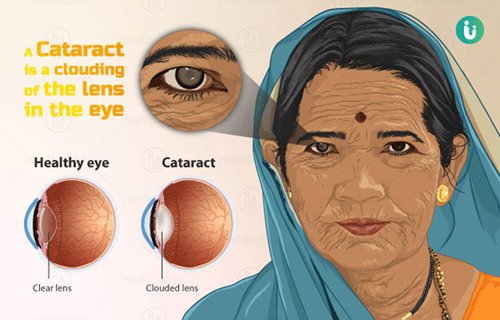
A cataract is the clouding of the eye’s focusing lens that results in blurry vision, and eventually leads to vision loss, if left untreated.
• Cataracts affect more than 50% of all adults above the age of 80.
• By age 60, more than half of all adults will begin to develop a cataract.
Cataracts develop gradually over time, without causing any pain or significant discomfort, so it could take decades before you notice any signs of the condition.
How do Cataracts Looks Like?
Cataract Pictures:
Cataracts come in different types, and develop for different reasons. Here are some photos showing a few types of cataracts.
Mature Cataract (Nuclear):
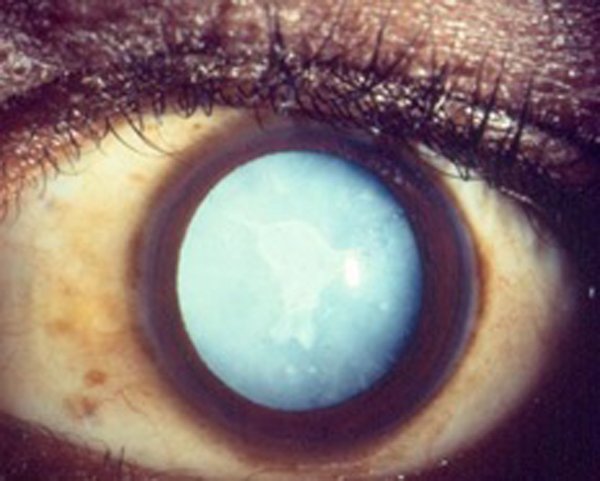
A mature cataract means the cataract has become large and dense (seen in this photo as the bluish/white area in the middle of the eye). With a mature cataract, the eye’s lens is opaque (meaning you can’t see through it), severely limiting vision. This cataract is a nuclear cataract, which means it forms deep in the center of the lens (nucleus).
Congenital Cataract:
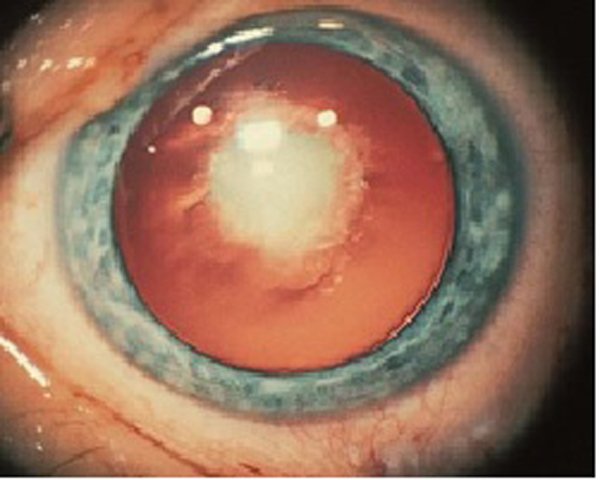
A congenital cataract is found in a baby’s eye at birth. In this image, the congenital cataract is the white, circular area in the middle of the eye. Children’s eyes and vision continue to develop until they are around 10 years old. If a congenital cataract is not treated early, a child’s vision can be affected for life.
Diabetic Snowflake Cataract:
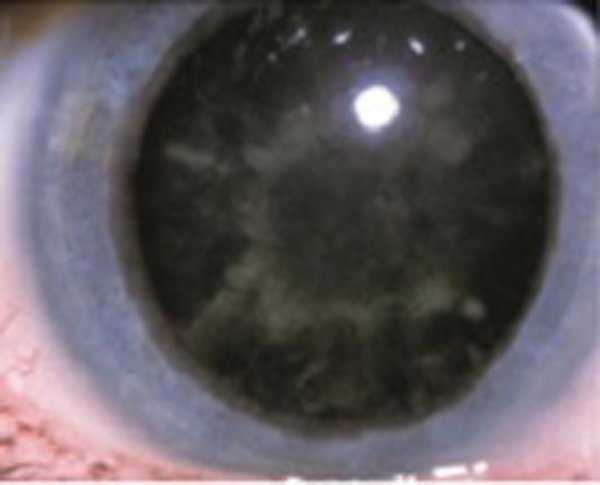
People with diabetes mellitus are at greater risk of developing cataracts. Uncontrolled levels of blood sugar lead to changes in the eye’s lens. The cataract pictured here, called a diabetic or “snowflake” cataract, is sometimes seen in people with uncontrolled diabetes. It has a grayish-white starburst or snowflake appearance.
Traumatic Cataract:
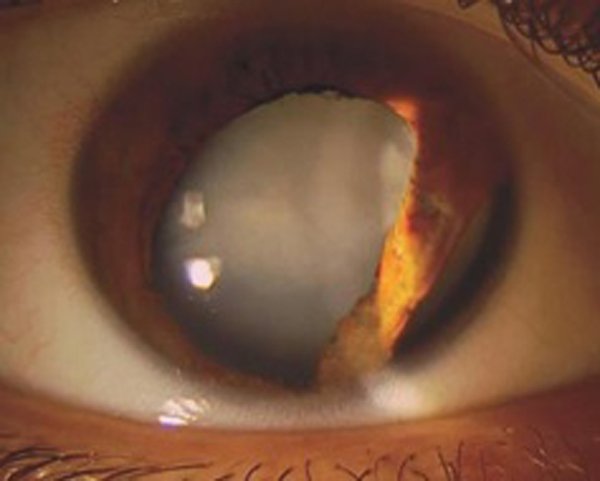
A cataract can develop after trauma to the eye, either by blunt force (like a blow to the eye) or by something penetrating into the eye. This is a photo of an eye after a paintball injury. A cataract can be seen as the cloudy, white area in the middle of the eye. Part of the iris is separated (see the brownish-orange area on the right side). Thousands of eye injuries happen every day, yet nine out of 10 of them are preventable by wearing appropriate safety eyewear.
Vision Problems with Cataracts:
If you have a cataract, your lens has become cloudy, like the bottom lens in the illustration. It is like looking through a foggy or dusty car windshield. Things look blurry, hazy or less colorful with a cataract.
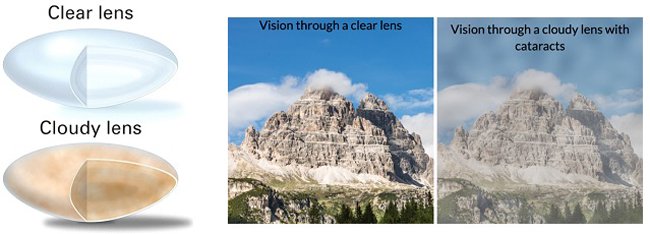
The top lens is a clear, natural lens. The bottom lens shows clouding by cataract.
Cataracts Symptoms:
Here are some vision changes you may notice if you have a cataract:

• Having blurry vision
• Seeing double or a ghosted image out of the eye with cataract
• Being extra sensitive to light (especially with oncoming headlights at night)
• Having trouble seeing well at night, or needing more light when you read
• Seeing bright colors as faded or yellow instead
If you notice any of these cataract symptoms, notify your ophthalmologist.
What Causes Cataracts?
Aging is the most common cause. This is due to normal eye changes that begin to happen after age 40. That is when normal proteins in the lens start to break down. This is what causes the lens to get cloudy. People over age 60 usually start to have some clouding of their lenses. However, vision problems may not happen until years later.
Other reasons you may get cataracts include:

.jpg)
• having parents, brothers, sisters, or other family members who have cataracts
• having certain medical problems, such as diabetes
• smoking
• having had an eye injury, eye surgery, or radiation treatments on your upper body
• having spent a lot of time in the sun, especially without sunglasses that protect your eyes from damaging ultraviolet (UV) rays
• using certain medications such as corticosteroids, which may cause early formation of cataracts.
Most age-related cataracts develop gradually. Other cataracts can develop more quickly, such as those in younger people or those in people with diabetes. Doctors cannot predict how quickly a person’s cataract will develop.
You may be able to slow down your development of cataracts.

Protecting your eyes from sunlight is the best way to do this. Wear sunglasses that screen out the sun’s ultraviolet (UV) light rays. You may also wear regular eyeglasses that have a clear, anti-UV coating. Talk with your eye doctor to learn more.
Cataract Diagnosis:
Your ophthalmologist will examine and test your eyes to make a cataract diagnosis. This comprehensive eye exam will include dilation. This means eye drops will widen your pupils.
Slit-lamp exam:
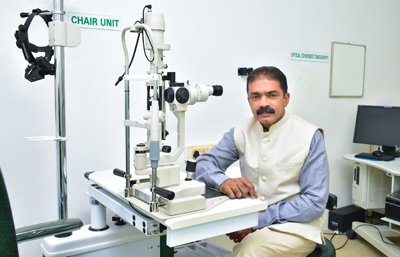
Your ophthalmologist will examine your cornea, iris, lens and the other areas at the front of the eye. The special slit-lamp microscope makes it easier to spot abnormalities.
Retinal exam:
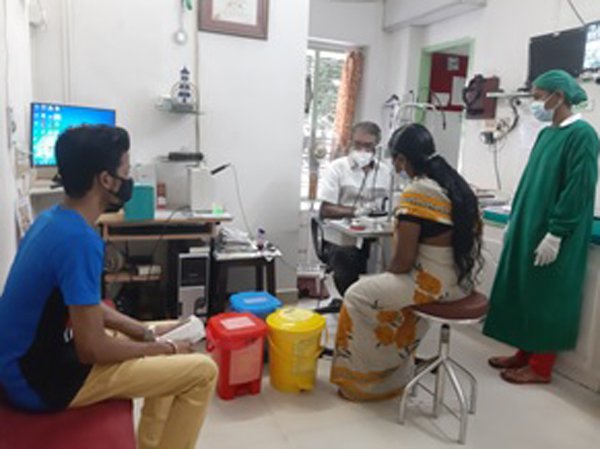
When your eye is dilated, the pupils are wide open so the doctor can more clearly see the back of the eye. Using the slit lamp, an ophthalmoscope or both, the doctor looks for signs of cataract. Your ophthalmologist will also look for glaucoma, and examine the retina and optic nerve.
Refraction and visual acuity test:
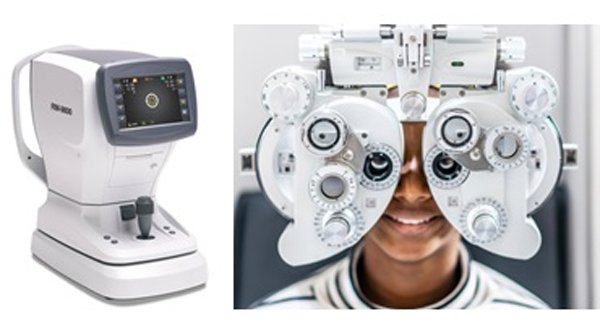
This test assesses the sharpness and clarity of your vision. Each eye is tested individually for the ability to see letters of varying sizes.
Once I have a cataract diagnosis, what should I do?

• Have an eye exam every year if you're older than 65, or every two years if younger.
• Protect your eyes from UV light by wearing sunglasses that block at least 99 percent UV and a hat.
• If you smoke, quit. Smoking is a key risk factor for cataracts.
• Use brighter lights for reading and other activities. A magnifying glass may be useful, too.
• Limit driving at night once night vision, halos or glare become problems.
• Take care of any other health problems, especially diabetes.
• Get the right eyeglasses or contact lenses to correct your vision.
• When it becomes difficult to complete your regular activities, consider cataract surgery.
• Make an informed decision about cataract surgery. Have a discussion with your ophthalmologist about:
o the surgery,
o preparation for and recovery after surgery,
o benefits and possible complications of cataract surgery,
o cataract surgery costs,
o other questions you have.
Cataract Treatment:
Cataracts can be removed only with surgery.
If your cataract symptoms are not bothering you very much, you don’t have to remove a cataract. You might just need a new eyeglass prescription to help you see better. You should consider surgery when cataracts keep you from doing things you want or need to do.
How does cataract surgery work?

During cataract surgery, your eye surgeon will remove your eye’s cloudy natural lens. Then he or she will replace it with an artificial lens. This new lens is called an intraocular lens (or IOL). When you decide to have cataract surgery, your doctor will talk with you about IOLs and how they work.
People who have had cataract surgery may have their vision become hazy again years later. This is usually because the eye’s capsule has become cloudy. The capsule is the part of your eye that holds the IOL in place. Your ophthalmologist can use a laser to open the cloudy capsule and restore clear vision. This is called a capsulotomy.
Cataracts are a very common reason people lose vision, but they can be treated. You and your ophthalmologist should discuss your cataract symptoms. Together you can decide whether you are ready for cataract surgery.
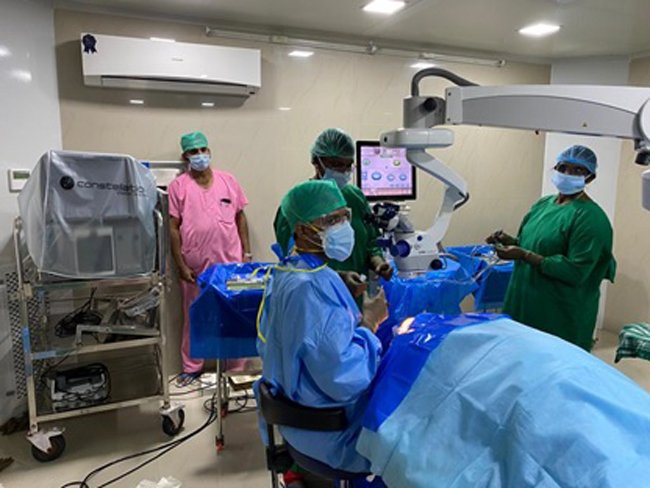
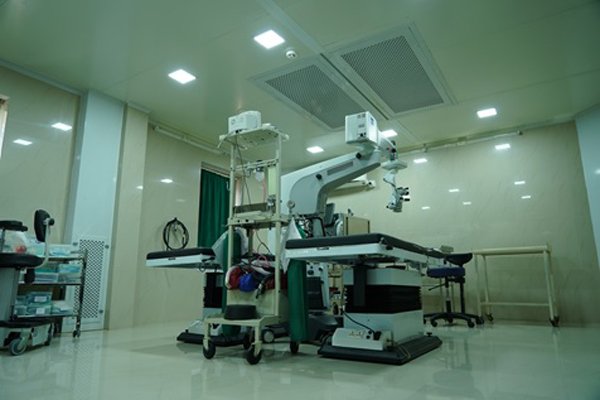
ZEISS LEMURA i - OPERATING MICROSCOPE
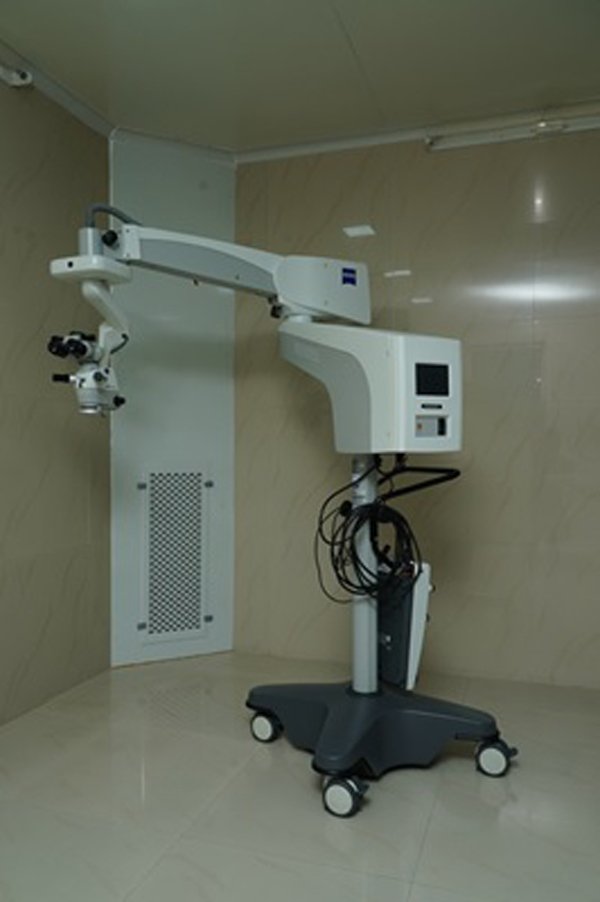
Superior contrast, resolution, clarity:
Apochromatic optics provide an exceptional view with high contrast and outstanding resolution. The ZEISS OPMI LUMERA 300 delivers clarity of detail that is unparalleled in its class.
Less stress for your patients:
With outstanding light transmission, the ZEISS OPMI LUMERA 300 results in significantly reduced light exposure for your patients, leading to less stress on the eye.
Independent assistant‘s microscope:
The ZEISS OPMI LUMERA 300 features an optional, fully independent assistant’s microscope that requires no light from the main microscope.
Brilliant view of the retina:
The optional ZEISS RESIGHT 500 fundus viewing system provides a clear visual impression during retina surgeries.
ALCON CONSTELLATION VISION SYSTEM –PHACO:
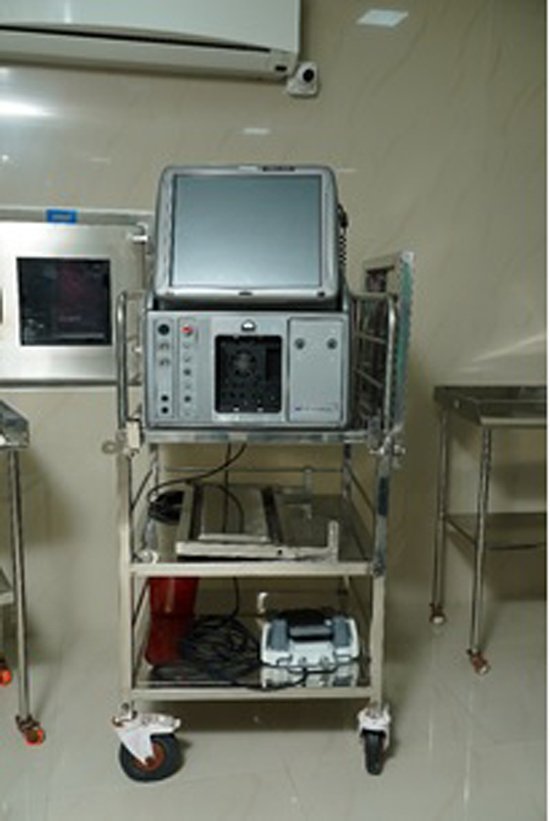
Phacoemulsification is a modern cataract surgery procedure in which an ultrasonic device is used to break up and then remove a cloudy lens, or cataract, from the eye to improve vision. The lens matter is broken up, emulsified and then sucked out of the eye. The aspirated fluid is simultaneously replaced with irrigation of a balanced salt solution. The insertion of an intraocular lens (IOL) usually immediately follows phacoemulsification.
To reduce post surgical astigmatism, the main incision wound has now been reduced from 2.8mm to less than 2.4mm. The procedure is then known as Micro Incision Cataract Surgery (MICS).
.jpg)
How Long Does It Take To Recover From Cataract Surgery?
Days or weeks after surgery:

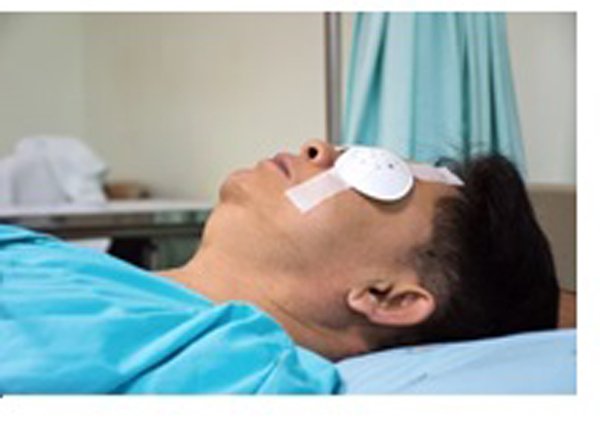
• You may have to use eye drops after surgery. Be sure to follow your doctor’s directions for using these drops.
• Avoid getting soap or water directly in the eye.
• Do not rub or press on your eye. Your ophthalmologist may ask you to wear eyeglasses or a shield to protect your eye.
• You will need to wear a protective eye shield when you sleep.
• Your ophthalmologist will talk with you about how active you can be soon after surgery. He or she will tell you when you can safely exercise, drive or do other activities again.
What Are the Risks of Cataract Surgery?
Like any surgery, cataract surgery carries risks of problems or complications. Here are some of those risks:

• Eye infection.
• Bleeding in the eye.
• Ongoing swelling of the front of the eye or inside of the eye.
• Swelling of the retina (the nerve layer at the back of your eye).
• Detached retina (when the retina lifts up from the back of the eye).
• Damage to other parts of your eye.
• Pain that does not get better with over-the-counter medicine.
• Blurred vision.
• Seeing halos, glare, and dark shadows.
• Vision loss.
• The IOL implant may become dislocated, moving out of position.
Cataract surgery will not restore vision lost from other eye conditions, such as macular degeneration, glaucoma, or diabetic retinopathy.
Your ophthalmologist will talk with you about the risks and benefits of cataract surgery.
Posterior Capsular Opacification:

Your vision could become cloudy or blurry weeks, months or years after cataract surgery. This is not unusual. Your doctor might call this a “posterior capsular opacification (or PCO).” It's also called "secondary cataract" or "scar tissue." It's not like a scar you get on your skin. But because it happens after the eye has healed from cataract surgery, some people think of it as a scar. It happens when a membrane called the posterior capsule becomes cloudy. It might help to think of the posterior capsule as a transparent pocket. It holds your IOL in place. It also once held your eye’s natural lens (what became the cataract) in place. If you notice cloudy vision again, you might need to have a laser procedure. The laser creates an opening in the cloudy capsule and is called a posterior capsulotomy (or a YAG laser capsulotomy). This procedure helps restore clear vision.
Cataract Surgery Costs
Cataract surgery costs vary from 3000 to 1 lakh depending on the lens equipment used and the skill of the surgeon.
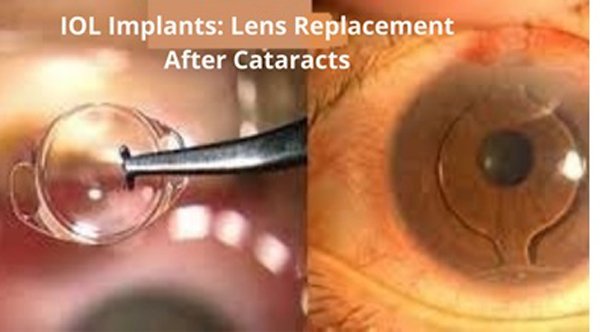
PLEASE CLICK HERE FOR MORE DETAILS ABOUT: IOL
How do cataracts develop?
The lens of the eye is mostly made up of water and protein, naturally arranged to maintain transparency and enable light to pass through to the retina at the back of the eye.
The lens is also responsible for adjusting the eye’s focus, to enable clear vision at all distances, such as when driving a car. The lens changes focus so you can clearly see the road or street sign ahead, then look down at your speedometer, and back to the road.
However, as we age, the proteins in the lens begin to lose their transparency and collect together, causing a “clouding” of part of the lens, called a cataract. Over time, the cataract may worsen and affect more of the lens, making it more difficult to see clearly.
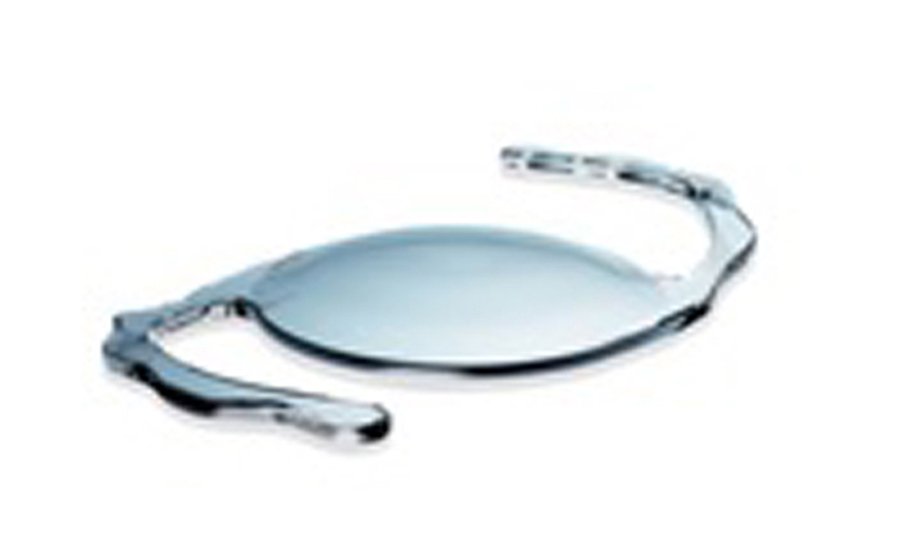
Eyewear after cataract surgery:
During cataract surgery, the natural lens is replaced by an intraocular lens (IOL). The optical power of the IOL is calculated to enable clear vision without the need for eyewear.
However, in some cases, an IOL implant may not be able to fully correct the optical prescription. In this case, reading glasses or progressive lenses may be necessary to correct mild residual refractive errors or presbyopia.

Glasses with anti-reflective coating and photochromic lenses are usually recommended to enhance vision and comfort after cataract surgery.
Can I prevent cataracts from developing?
Eventually, all people develop cataracts.
While most cataracts develop as a result of aging, research has shown that there are health, environmental, and behavioural factors that can increase your risk for developing a cataract.
Many of these risk factors include:

• Smoking
• Excessive alcohol consumption
• Prolonged exposure to ultraviolet (UV) radiation
• Obesity
• Diabetes
• Hypertension
• Prolonged use of steroids or statin medications
• Eye injury or eye surgery
• Nutritional deficiency
You may be able to lower the effects of many of these risk factors by making some lifestyle changes:

• Wear protective sunglasses to avoid UV radiation
• Consume a healthy diet rich in vitamins C and E, lutein, zeaxanthin, zinc and Omega 3
• Avoid smoking and excessive alcohol consumption
• Schedule regular eye exams to detect early signs of cataracts.
Are cataracts painful?
A: Cataracts do not cause pain, though they do cause frustration and discomfort from reducing vision clarity. They develop gradually over time, with symptoms going unnoticed for many decades.
Can Leafy Green Vegetables Prevent Cataracts?
Leafy green vegetables:
Antioxidants present in dark leafy green vegetables can help prevent cataracts.
The antioxidants lutein and zeaxanthin, present in vegetables like kale, spinach, and collard greens, help protect human lens cells against UV light, which is a leading cause of cataract formation, according to the results of laboratory research on human lens cells.
The effects of these antioxidants were compared to vitamin E, an antioxidant that is also known to decrease the risk of developing eye disorders.
Lutein and zeaxanthin were found to be roughly 10 times more effective than vitamin E at protecting cells from UV damage.
But this doesn’t mean you shouldn’t add other foods with vitamin E, as they can still help in the prevention of cataracts.
What are the top 12 green leafy vegetables?
There are many lists of the best green leafy vegetables to eat, here is our list:

1. Spinach
2. Carrots
3. Sweet potato
4. Mushrooms
5. Beets (beetroot)
6. Bells peppers (capsicum)
7. Onions
8. Garlic
9. Tomatoes
Other nutrients to add to your diet:
Vitamin C:

Vitamin C not only protects the immune system and helps fight against infections and can also help reduce the risk of cataracts.
This vitamin is abundant in oranges and guava.
Green and red chili peppers, bell peppers, dark leafy greens, broccoli, kiwi and papaya are all high in vitamin C.
Omega-3 Fatty Acids:

Omega-3 fatty acids help to prevent cataracts and keep your eyes moist by providing important oils to your tear layer.
Flax seeds are high in omega-3 fatty acids and are considered one of the best sources.
Grass-fed beef, tofu, and fatty fish including cod, salmon, sardines, and halibut are other good sources.
Vitamin E:

Vitamin E, found in nuts and seeds, is an antioxidant that protects the membranes of your eyes.
Vitamin E, omega-3 fatty acids, and antioxidants are all abundant in walnuts.
Other nuts and seeds that are good for your eyes include sunflower seeds, almonds, peanuts.

How long will I have blurry vision and glare after cataract surgery?
Question:
I had a cataract removed nine days ago with astigmatism correction and a multifocal IOS lens implanted. I still have blurred vision along with glare. I started with 20/40 vision in that eye and a day after surgery I had 20/25. How long can I expect to have these symptoms?
Answer:
Blurred vision can result from several factors:
Lens error. Based on your great vision of 20/25 this is unlikely to be the case.
• Dry eyes can contribute significantly to blurred vision and glare at night. We recommend artificial tears such as Systane or Refresh tears 3-4 times per day or as directed by your ophthalmologist.
• Blurred vision can also be a direct result from swelling in the retina, which usually occurs a few weeks after cataract surgery in rare cases. Given your great level of visual acuity of 20/25—which is just one line away from 20/20—that’s unlikely.
Glare can be present even after cataract surgery and tends to decrease over time. Glare can be seen with multifocal lenses and even non-multifocal lenses. After cataract surgery with multifocal lenses some patients may even need a pair of glasses at night and/or for reading to achieve best vision. The duration of these symptoms can vary greatly depending on each patient’s unique circumstance. Speak with your ophthalmologist for more information.
How is lens power determined before cataract surgery?
Question:
When preparing for cataract surgery, how is the lens power or strength determined? Human calculation or a computer? How accurate is it?
Answer:
The most important measurements we take are the length of the eye and the shape (curve) of the cornea (clear dome-shaped window at the front of the eye). These measurements, plus a few other factors and the features of your chosen intraocular lens, are used in various formulas to choose the right power of lens. These formulas give you and your ophthalmologist a choice of power. The calculations have gotten better and are based on mathematics and population data. They are extremely accurate but not 100%. This is because each eye is unique and may have characteristics that defy the assumptions of the formulas. Sometimes we can anticipate this and sometimes we can’t. There is art and science to this. We don’t always get it exact, but nearly all patients are happy with their vision.
What are the risks of not removing a cataract?
Question:
What are some of the risks associated with not having a cataract removed? Can other damage occur as the cataract continues to get larger?
Answer:
The main risk of not having a cataract removed is that you will be living with compromised vision from the cataract that is known to result in a higher incidence of falls as well as other problems. If your vision is not bothersome and you feel you can get around and do all activities of daily living, there is no harm in waiting. It is possible to wait too long, making the cataract operation more difficult if the cataract becomes mature or very dense.
Can I prevent or slow the development of my mild cataract?
Question:
I am 67 years old and have just had a diagnosis of mild cataracts. Is there any way to prevent or slow its development?
Answer:
Cataracts are a normal function of aging. If you live long enough, you will develop cataracts. That being said, there are a few things that can be done to delay some forms of cataract.
Ultraviolet light (UV) causes cataracts, so it is wise to wear UV protective glasses, both for indoors and out of doors. Diabetes can cause cataracts so it’s important to regulate your blood sugar carefully if you are diabetic. Corticosteroids can cause cataract so it is wise to limit use of these medications whenever possible.
How long do I have to use the antibiotic eye drops after cataract surgery?
Question:
I had cataract surgery two weeks ago. How long do I have to use the antibiotic eye drops after cataract surgery?
Answer:
Your surgeon should give you instructions on this but two weeks is often enough if there is no sign of infection. Please have your doctor check or call him/her for instructions.
Is it safe to have an MRI after cataract surgery?
Question:
Is it safe to have an MRI body scan if I had cataract surgery two years ago?
Answer:
Yes, it's safe. However, any interior magnetic items (such as a pacemaker or inner ear implant) should always be discussed with your doctor before an MRI.
.jpg)
3.jpg)
{{r.reply}}
Your comment was submitted for review. It will start display once it was approved by Admin
Comments